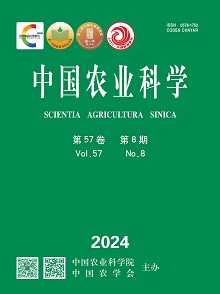|
|
Dynamic Study on Maternal Antibody of Duck Tembusu Virus Disease Inactivated Vaccine (HB Strain)
HAN Chun-hua, ZHAO Ji-cheng, DUAN Hui-juan, LIN Jian,YANG Zhi-yuan, XIE Jia, PAN Jie, WANG Xiao-lei, LIU Li-xin, LIU Yue-huan
Scientia Agricultura Sinica
2016, 49 (14):
2837-2843.
DOI: 10.3864/j.issn.0578-1752.2016.14.018
【Objective】The objective of this study is to evaluate the efficacy of maternal antibodies induced by Duck Tembusu Virus Disease Inactivated Vaccine and to determine the age of optimal initial immunity.【Method】Fertilized eggs were collected at random from the Cherry Valley Duck farm which was 135 days post-vaccination with Duck Tembusu Virus Disease Inactivated Vaccine (HB strain), ten progeny ducklings from the immunized breed ducks and 5 progeny ducklings from non-immunized breed ducks were randomly selected when they were 5 ,7 ,10, and 15 days old. Serum samples were collected from all ducks for the detection of maternal antibody, then the ducks were challenged with Duck Tembusu virus (HB strain) at 0.1ml(100DID50)/duck intramuscularly. Clinical symptoms of the challenged ducks were observed within 10 days, such as food intake, feces, abnormal clinical sighs and death. Serum samples were collected from all ducks for virus isolation via jugular vein on 2 days post inoculation (DPI). Each serum sample was inoculated into five 6-day-old SPF chicken embryos at the inoculum of 0.1 ml per embryo. Then they were hatched at 37℃ for 168h. The chicken embryos died within 24h were discarded. If more than one (including one) death chicken embryos were obsearved, then it was concluded that virus isolation was positive. The rate of protection of ducklings with maternal antibody and the morbidity of ducklings without maternal antibody were calculated. On 5 dpi, all ducklings were weighed respectively, and the average daily gain was calculated. The effect of maternal antibody on the weight gain of ducklings were analyzed by T test for paired samples. The efficacy of maternal antibodies was evaluated by neutralizing antibody titer, body weight changes and virus isolation.【Result】 (1) The number of positive maternal antibody titers peaked in 1 day old ducklings was 56.1%(37/66), then fell to 40% (4/10) in ducklings on day 5, 50% (5/10) on day 7, 30% (3/10) on day 10, and 0% (0/10) on day 15. (2) On viral challenge, the control group showed signs of depression (20/20), neurologic disturbances (6/20) and death (2/20). Ducklings with positive maternal antibody titers showed mild depression. (3) On 5 dpi, the average daily gain of 5-, 7-, 10- and 15-day old ducklings with maternal antibody were 115.5, 142.8, 177.8 and 162.2g, respectively, and that of the ducklings without maternal antibody were 54.5, 91, 165 and 118.8g, respectively. (4) The rate of protection against challenge with DTMUV of 5-, 7-, 10- and 15-day old ducklings with maternal antibody were 50%(5/10), 60%(6/10), 20%(2/10) and 0%(0/10), respectively. The morbidity of 5-, 7-, 10- and 15-day old ducklings without maternal antibody were all 100%. (5) The average weight gain and efficacy reached a peak in 5-day old and 7-day old ducklings, which were 50% (5/10) and 60% (6/10), respectively. Although the maternal antibodies decreased between 10 days old and 15 days old ducklings (20% and 0%), it still has protective effect compared with the control group. 【Conclusion】(1) Duck Tembusu Virus Disease killed vaccine maternal antibodies, so it play an important role in the protection of 10-day-old ducklings against virus infection; (2) Vaccination age is optimized between 7 to 10 days of age.
Reference |
Related Articles |
Metrics
|
|











